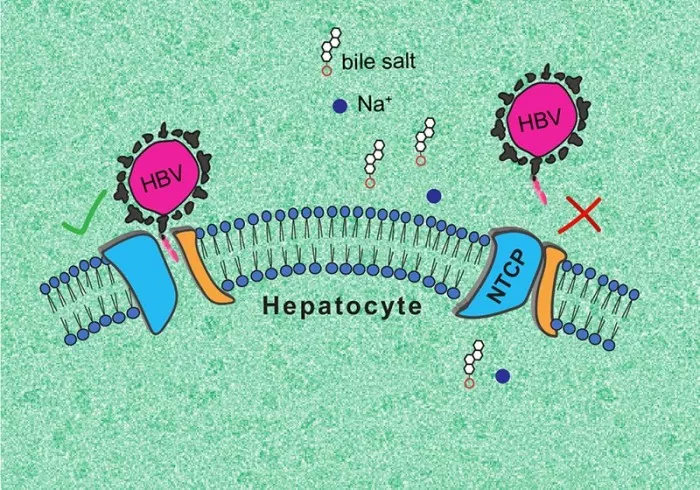Na + - taurocholate cotransporter polypeptide (NTCP) is a protein specially located on hepatocyte membrane. Its main function is to recover bile acid molecules. It is also a cellular receptor for human hepatitis B and D virus (HBV / HDV) A better understanding of NTCP can develop liver specific therapies and fight HBV and HDV infections. Although NTCP is an important gateway to the liver, it has not been fully described before.

Illustration of two three-dimensional conformations used by NTCPs. Left: the "open" conformation that HBV and HDV can combine. Right: a "closed" conformation that prevents virus recognition.
NTCP is a difficult protein to study. It weighs only 38 kilodaltons (kDa), while the cryogenic electron microscopy technology used to study such molecules is only effective for molecules weighing more than 50 kilodaltons. Therefore, the challenge is how to "amplify" and stabilize it.
To do this, teams from French and Belgian laboratories developed and tested a series of antibody fragments against NTCP. The three-dimensional structure of the resulting complex was determined by low-temperature electron microscope. Different antibody fragments were relatively stable and showed several forms of NTCP.
The team of scientists can describe two basic NTCP conformations: one is that the protein opens a large membrane pore to bile salts, with which HBV and HDV can bind; The other is a "closed" conformation to prevent recognition by the virus.
The first "open" conformation is very surprising because no other known molecular transporters form such a "widely open" pore. In turn, the second conformation may help to find antiviral molecules to prevent HBV and HDV infection. The research group intends to continue its work to fully clarify the function of NTCP.